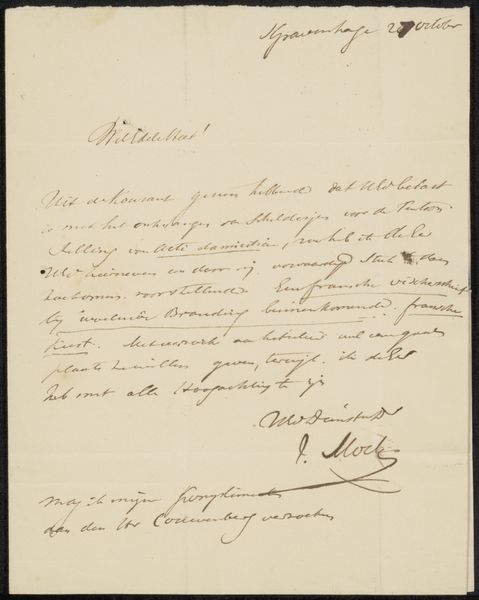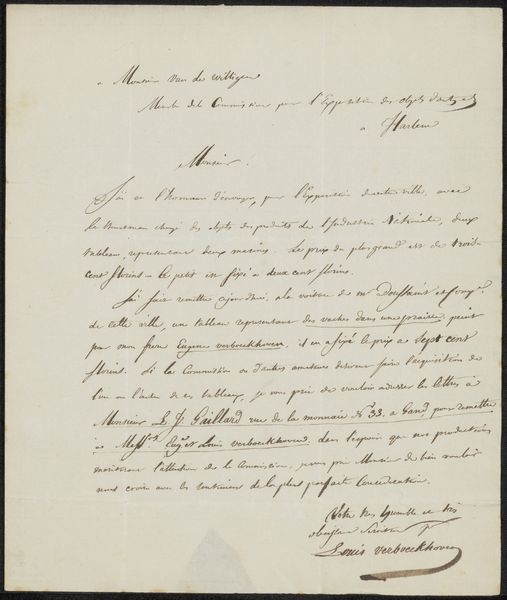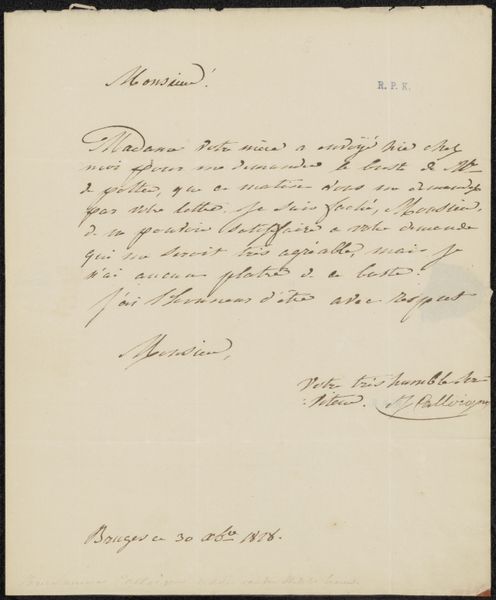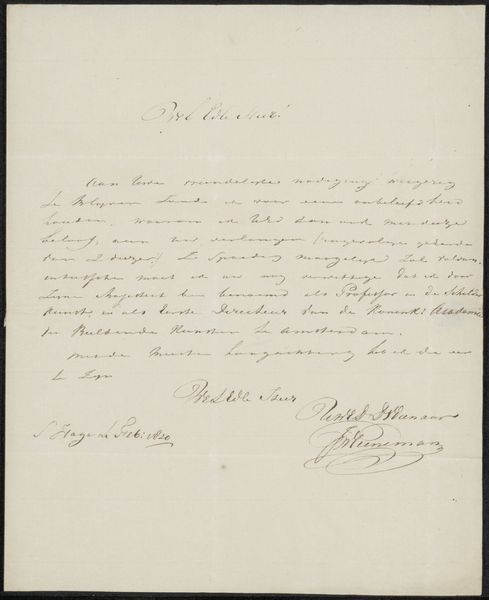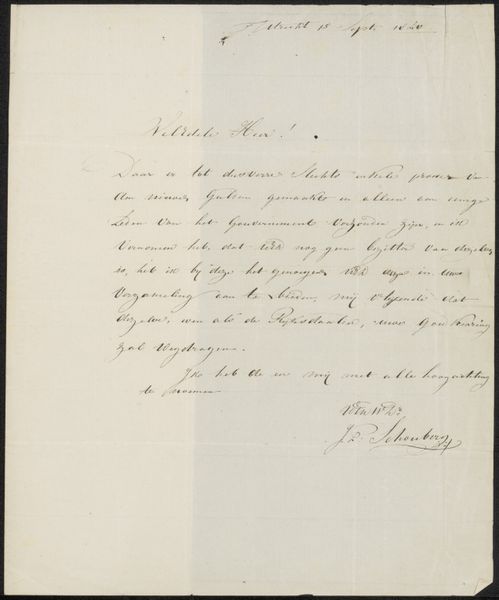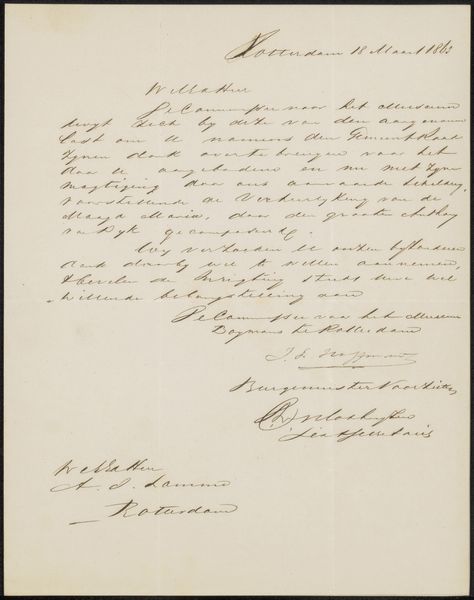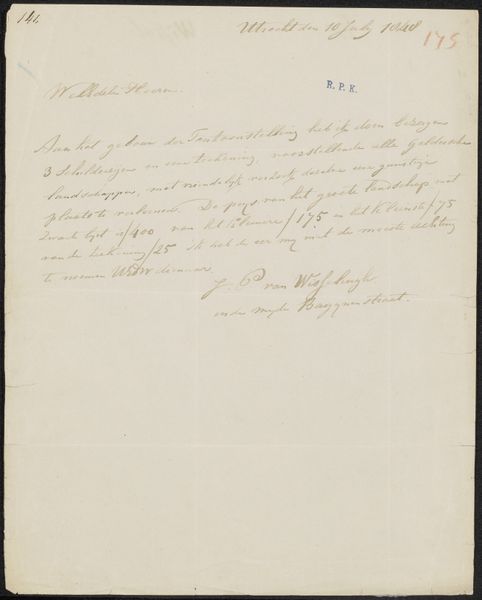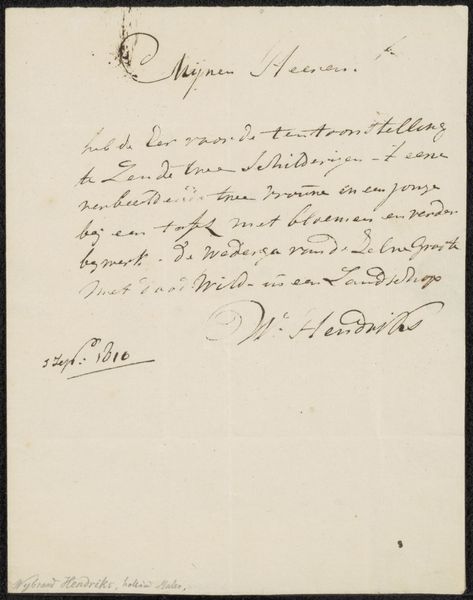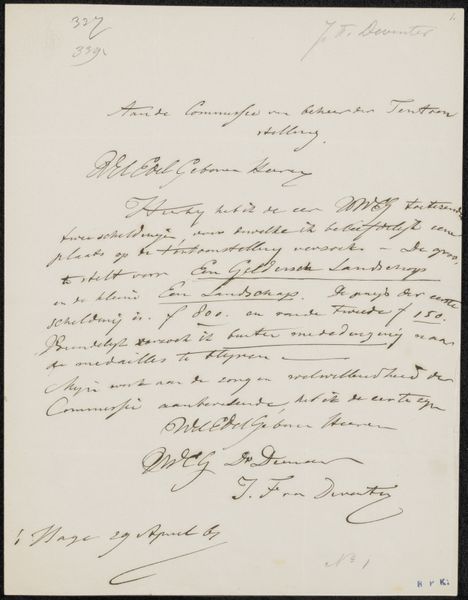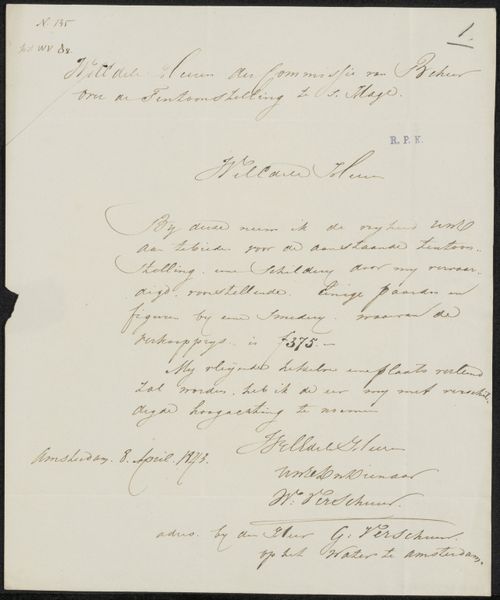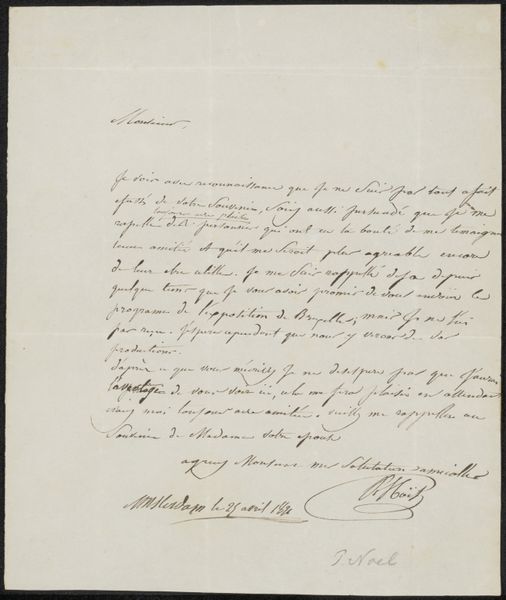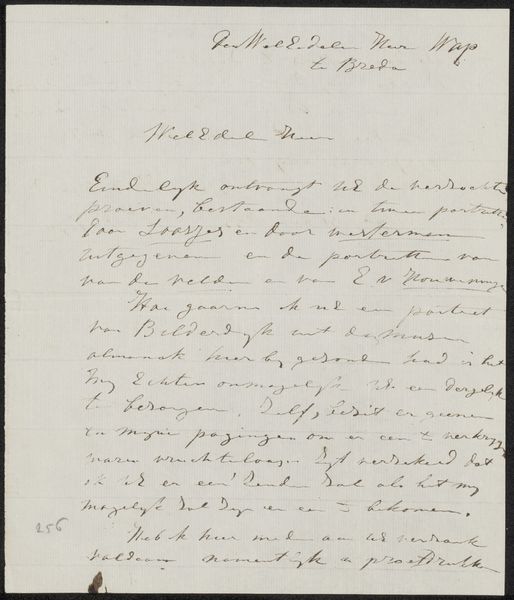
drawing, paper, ink, pen
#
drawing
#
ink paper printed
#
hand drawn type
#
paper
#
ink
#
romanticism
#
pen work
#
pen
Copyright: Rijks Museum: Open Domain
Curator: Here we have Joseph Paelinck’s "Brief aan de heer Cambertyn," possibly from 1835. It's an ink drawing on paper, currently held in the Rijksmuseum. Editor: It's intriguing, isn't it? The first thing that strikes me is the handwritten text. It feels very intimate, almost as though we're peering into a private exchange. The labor behind each stroke, the paper itself as a vehicle for communication, very palpable. Curator: Indeed. Paelinck was a significant figure in the Belgian art scene of the early 19th century. Examining his place in society explains this letter and his interest in communicating to another person with it. The Romantic period valued personal expression. This letter offers a glimpse into the social fabric of the time. Editor: Thinking about the materials – the specific ink, the quality of the paper – provides insight into Paelinck’s access and status. Was this common parchment, or something more refined indicating a certain economic level? Also, I’m drawn to that "hand drawn type," if we may. How does its unique imperfect beauty compare to its printed alternatives at that moment in history? Curator: It is interesting to reflect on the choice of handwritten communication during a period witnessing increasing printing press activity. There's a personal touch to handwriting that printed materials lack. Paelinck, perhaps, sought that more direct connection. The contents would also hint at social circumstances, power relations within cultural production, maybe some sort of appeal for help with networking… Editor: Absolutely. It prompts considerations on craft versus commodity, the artist as artisan... You also get a raw, direct connection to Paelinck’s hand, mind, and intentions in a way we often miss with artworks made in industrial quantities. Even now the labor is immediately present! Curator: Ultimately, the piece shows us that Romanticism wasn't just grand historical paintings; it existed in everyday exchanges, recorded within institutional history thanks to holdings like the Rijksmuseum’s. Editor: Yes. For me, it serves as a potent reminder that even the simplest tools, carefully handled, carry significance, connecting art and culture!
Comments
No comments
Be the first to comment and join the conversation on the ultimate creative platform.
